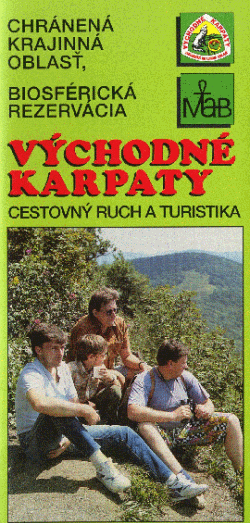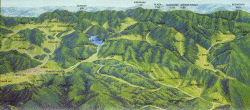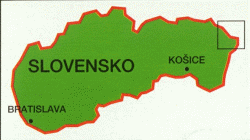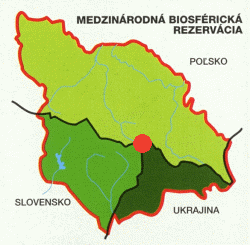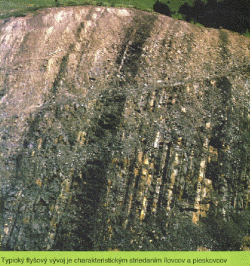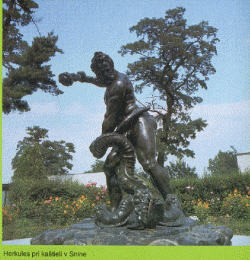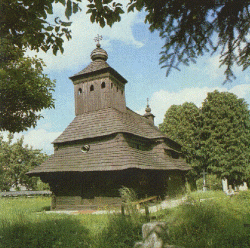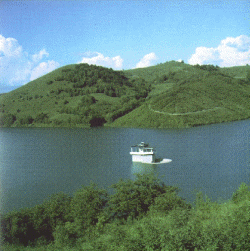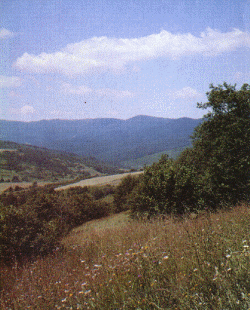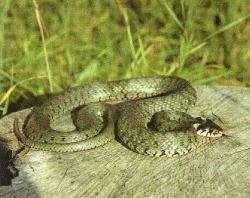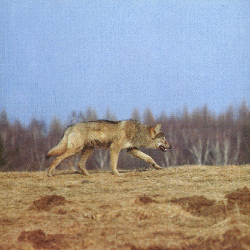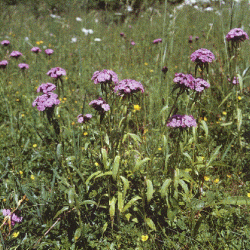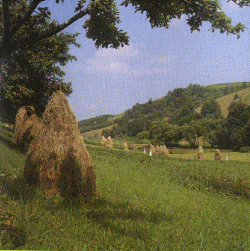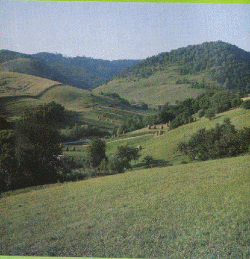| Slovakia Genealogy Research Strategies | ||||||
| Home | Strategy | Place Names | Churches | Census | History | Culture |
| TOOLBOX | Contents | Settlements | Maps | FHL Resources | Military | Correspondence |
| Library | Search | Dukla Pass | ||||
Hiking the Kremenec Stužica Virgin Forest Eastern Carpathian Biosphere Reserve
East Carpathian Biosphere Reserve
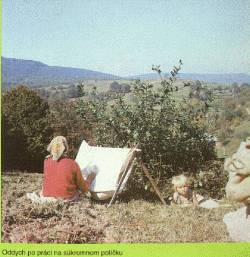 |
"Biosphere reserves are sites established by countries to promote biodiversity conservation and sustainable development based on local community efforts and sound science... Biosphere reserves are nominated by national governments for international recognition under UNESCO's Mand and the Biosphere (MAB) Programme." www.unesco.org |
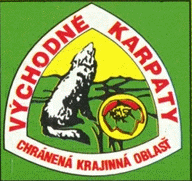 |
The following material is excerpts from tourist brochures from the Biosphere Reserve. They were collected in 2006 by Michael Habler.
| Poland | Slovakia | Ukraine |
|
Bukovske Vrchy Natural Reserve
(of Poland) Bieszczady National Park 29,200 Hectares |
Národný Park POLONINY
(Poloniny National Park) 29,805 Hectares created 1997 |
Uzhanski National Nature Park 39, 159 Hectares |
Table: The Three Parts of the Reserve
1. Chranena Krajinna Oblast, Biospherika Rezervacia VYCHODNE KARPATY - East Carpathian Biosphere Reserve
Ing. Terray Jan, Steve Schipe, Foto: Pcola Stefan
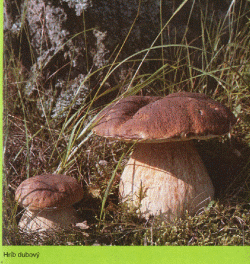 |
To the present day, 457 species of mushrooms, 208 lichens and 300 mosses have been identified in the Reserve. Of special value to the territory are the rare virgin forest communities of beech and mixed fir and beech. More than 1500 species of invertebrates have been recorded here, as have 292 species of vertebrates – of which 184 species are protected. Typical residents of the forests of the Biosphere Reserve are the wolf, European brown bear and Ural owl. Settlement in the area was greatly influenced by the Walachian Colonization. Dating from the 18th century are several rare, sacred buildings – wooden churches in Ulicske Krive, Rusky Potok and Topola. Economic life is, for the most part, tied to forestry and agricultural work. |
2. Cestovny ruch a Turistka - Tourist Routes
Ing. Terray Jan, Steve Shipe, Foto: Pcola Stefan
|
The district of Humenne offers relatively good conditions for the development of recreation and tourism. Worth of mention are the Andrassi Manor-house in Humenne, the Rollov Manor-house in Snina, the Andy Warhol Museum of Modern Art in Medzilaborce and the museum of Folk Architecture in Humenne. Sporting, tourism and other activities are to be found at the recreation centers of Danova and Snina rybnik (pools.) Winter sports activities are available at Danova, Borov, and Parihuzovce. The Vychodne Karpaty Biosphere Reserve offers a 40,601 hectare complex of natural landscape and cultural-historical values. |
Statue of Hercules at the Manor House in Humenne |
|
Wooden Church ("Cirkev") at Topola Eastern Orthodox wooden churches are located in the villages of Ulicske Krive, Rusky Potok and Topola. |
The water reservoir Starina, which provides a source of drinking water, is a large technical work. |
The main type of recreation in the Biosphere Reserve is active recreation-walking the trails in the area.
The point of entry for recreation and tourism in the Vychodne Karpaty Biosphere Reserve is the town of Snina and its environs where accommodations, food and other services are available.
3. Lud a Kultura - Local Culture
Ing. Bural Miroslav, Ing. Terray Jan, Steve Shipe
Foto: Pcola Stefan
| The origins of permanent settlement of the Biosphere Reserve began sometime in the 15th and 16th centuries with the advent of the Walachian Colonization which had a major influence on the original inhabitants, the Ruthenians. The major occupation of the inhabitants was shepherding and farming. The Eastern Slavic ethnic group, to which the Ruthenians belong, had their ethnic identify reflected in their architecture. Houses were wood, “log cabins.” The oldest consisting only of one room, were divided into more rooms. Roofs were straw. In other farm buildings, (barns, stables, etc.) was typically found a hayloft, “oboroh.” The most valuable architectural landmarks are the wooden churches, “cerkiv”, with rare iconographic decorations in the interiors. In the Biosphere today, four “wooden churches can be found. At the present time there are ten villages in the Biosphere Reserve. Seven more were removed during the 1970’s and 1890’s as a result of the construction of the water Reservoir Starina. |
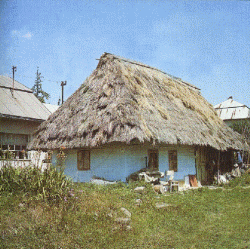 |
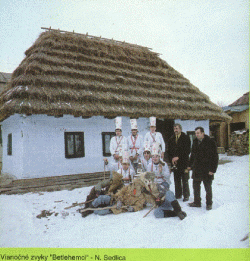 |
|
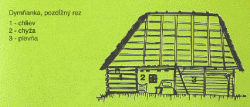 |
4. Polnohospodarstvo - Agriculture
Ing. Platko Juraj, Ing. Terray Jan, Steve Shipe, Foto: Pcola Stefan
Agricultural lands in the Vychodne Karpaty Biosphere Reserve consist of 6840,2 hectares, 15.6% of the total area. They vary in elevation from 250 meters to 550 meters, with the main parts belonging to the mountain production areas. Soil creating processes gave rise, for the most part, to cambisols. Soil reactivity varies from acidic to very acidic. The structure of the agricultural lands are mostly represented by permanent grasslands, of which 1505 hectares are meadows and 3816 hectares are pastures. Arable land only accounts for 851 hectares.
5. Lesne Hospodarstvo - Forest Lands
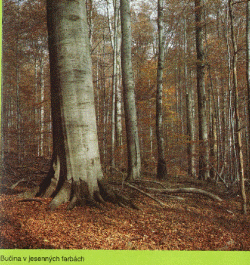 Ing. Gic Marian, Ing. Piros Milan, Ing. Terray Jan Foto: Pcola, Stefan Forests cover 32,183 hectares, (approximately 79,661 acres) of the Biosphere Reserve. This is just over 79% of the total area of the Reserve (40,601 hectares). They occur from the lowest to the highest elevations. The dominant tree species is beech (Fagus sylvatica). Other common species (silver fir, sycamore, Norway maple, oak, elm, etc.) do not account for any significant percentage of forest cover. Although the management of the forests has intensified over the past twenty years (including clear-cutting as a tool for forest regeneration), stands in this area are still among the most pristine in Slovakia. Some of them are protected as state nature reserves (Stuzica, Rozok, Havesova). |
6. Neziva Priroda - Mineral Springs
RNDr. Dzurovcin Ladislav CSc., Ing. Terray Jan, Steve Shipe, Foto: Pcola, Stefan
The territory of the
Biosphere Reserve forms in the easternmost part of the Eastern Carpathians in
Slovakia, the Bukovske vrchy hills. These have a highland of 1221 meters. The entire area of the Biosphere Reserve is built of flysch
rocks. The territory belongs in large part to the cool climate. Soils are
represented for the most part by unsaturated
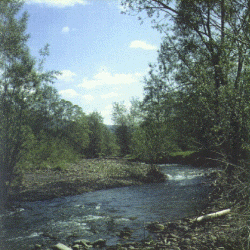 cambisols and also by inceptisols.
In flood-plains are the fluvisols. The calcareous areas of the flysch territory
are represented with rendzinas. The primary occurrence of groundwater is
associated with the layers and crevices in the flysch strata. They yield from
0.5 to 2 liters/second. Greater yields are associated with the riverine plands
– 10l/s, and in the areas associated with the products of weathering- 4l/s. The
territory of Vichodne Karapty Biosphere Reserve
belongs to the Bodfog river watershed. The northern part of territory forms at
the same time part of the European
divide. The area of the east Slovakian flysch is mostly impervious with a
shallow circulation of groundwater. A relatively large percentage of rainfall
is discharged about 50 percent. Rainwater quickly runs off, with high flow
rates this leads to flooding, when low runoff the drying up of streambeds. Much
water is present as a result of the spring snowmelt, as also after heavy, short-term downpours. The maximum flow rates
attained in the last 100 years reached 230 cubic meters per second on the Cirocha river near
Starina and 167 cubic
meters/second on the Ulicka stream at
Ulic. The water quality in the
territory is high. As a result, the resource is used to supply drinking water –
begin in 1987 with the completion of the water reservoir Starina.
cambisols and also by inceptisols.
In flood-plains are the fluvisols. The calcareous areas of the flysch territory
are represented with rendzinas. The primary occurrence of groundwater is
associated with the layers and crevices in the flysch strata. They yield from
0.5 to 2 liters/second. Greater yields are associated with the riverine plands
– 10l/s, and in the areas associated with the products of weathering- 4l/s. The
territory of Vichodne Karapty Biosphere Reserve
belongs to the Bodfog river watershed. The northern part of territory forms at
the same time part of the European
divide. The area of the east Slovakian flysch is mostly impervious with a
shallow circulation of groundwater. A relatively large percentage of rainfall
is discharged about 50 percent. Rainwater quickly runs off, with high flow
rates this leads to flooding, when low runoff the drying up of streambeds. Much
water is present as a result of the spring snowmelt, as also after heavy, short-term downpours. The maximum flow rates
attained in the last 100 years reached 230 cubic meters per second on the Cirocha river near
Starina and 167 cubic
meters/second on the Ulicka stream at
Ulic. The water quality in the
territory is high. As a result, the resource is used to supply drinking water –
begin in 1987 with the completion of the water reservoir Starina.
Sponsors, Pre-Chicko BR Vychodne Karpaty za financial podpory USIS, Peace Crops,and REC
Vychodkarpatsky omitologicky spolok Snina
7. Zivocisstvo - Zoology
Pcola Stevan, Ing., Terray Jan, Steve Shipe, Foto: Pcola Stefan, Jindro Vlach
From the zoogeographic standpoint, the territory of the Vychodne Karpaty Protected Landscape Area and the Biosphere Reserve is located in the Paleoartic biome, on the boundary between the western and eastern Carpathians. More than 1500 species of invertebrates have 504 species of butterflies and 572 beetles. Furthermore, 292 species of vertebrates occur here. Included are: 1 lamprey, 19 fish, 13 amphibians, 8 reptiles, 192 birds and 53 mammals. Protected species account for more than 30 species of invertebrates and 184 vertebrates. Most of the protected specimens are birds.
8. Rastlinstvo - Botany
Ing. Bural Miroslav, Ing. Terray Jan, Steve Shipe, Foto: Pcola Stefan
The entire area of the Polonina - the unique mountain grasslands characteristic of the Eastern Carpathians, is covered by state nature reserves (Plasa, Riaba Skala and Stuzica.)
Links to off-site webs will open in a new window. Please disable your pop-up stopper.
Last Update: 15 November 2020 Copyright © 2003-2021, Bill Tarkulich
